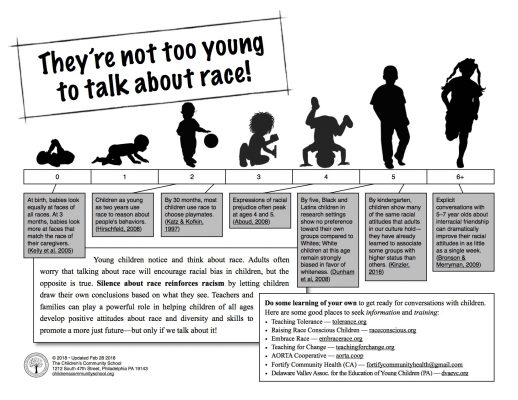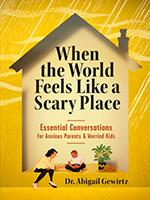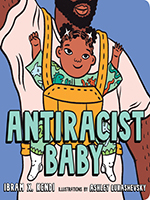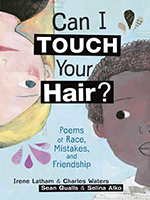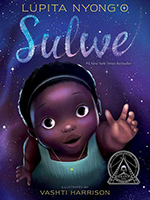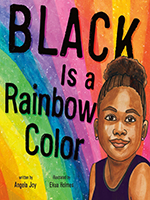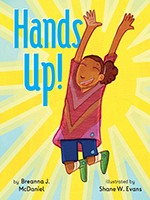Not too young to talk about race and social justice: Resources and booklists for parents, caregivers, and kids
Posted on June 12, 2020 at 6:00 am
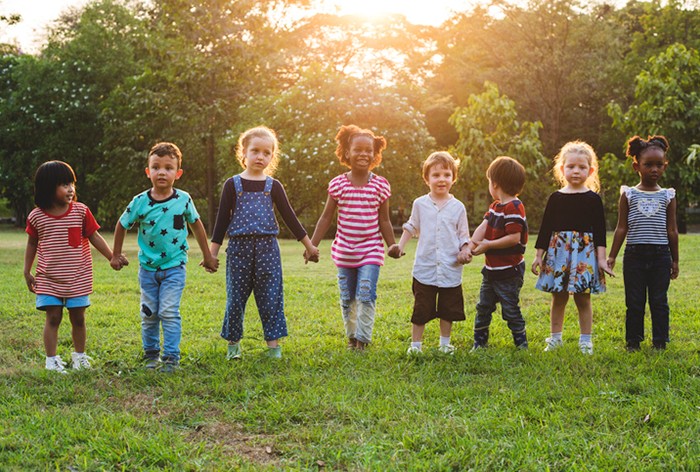
By Sheri Boggs
It’s hard to know where to start the conversation about race with young children. After all, these conversations aren’t easy for most adults. With children there is the additional necessity of making sure the conversation is both age-appropriate and reassuring (at a time when the news is anything but).
According to the Philadelphia-based Children’s Community School, which offers some fantastic online resources on teaching kids about social justice, children as young as 2 years old often show a preference for playmates of their own race, and by kindergarten, most children “show many of the same racial attitudes that adults in our culture hold.”
Children notice and think about racial differences, and while parents might want to avoid the subject as to not unwittingly bias their children, researchers find that “silence about race reinforces racism.” In the absence of important conversations and intentional exposure, children are left to make their own conclusions about race based on the unspoken attitudes of those around them.
Fortunately, there are things we can do. We can make sure the books we offer kids include a diverse cast of characters. A great way to start, even with infants, is to offer board books with photos of diverse babies (Yoga Baby, by Amy Hovey, is a staff favorite!) and to continue seeking out picture books featuring people of color as the child grows older.
We can also make sure they see examples of people working together to make the world a better place, as in All Are Welcome, by Alexandra Penfold, and Voice of Freedom: Fannie Lou Hamer, Spirit of the Civil Rights Movement, by Carole Boston Weatherford.
As our libraries offer curbside pickup service, my fellow librarians and I also offer a booklist of great titles for fostering positive discussions about race and other social justice issues. We’re also sharing reviews of a few recent favorites below.
A note about availability: These books are being requested more than ever now, so whenever possible, we are offering both the physical book and digital formats.
BOOKS FOR KIDS & PARENTS (DIGITAL)
When the World Feels Like a Scary Place: Essential Conversations for Anxious Parents and Worried Kids, by Abigail Gewirtz
Audience: Adults
Author Abigail Gewirtz, an experienced child psychologist, offers examples of typical conversations, ideas for how to respond depending on the child’s age, calming strategies kids can use to help themselves, and advice on how to handle big emotions.
This much-needed title for parents has just been released and could not have come at a better time. The cover boasts that there’s an extra chapter on how to talk to your kids about COVID-19, and parents will be just as grateful for the chapter on social justice. This reassuring guide leads with the good news that parents matter now more than ever.
AntiRacist Baby, by Ibram X. Kendi
Audience: Ages 0–4
Kendi, author of Stamped from the Beginning, and How to Be an Antiracist, introduces the concept of social justice as an adorable baby and her loving dad attending a peaceful protest and sharing such simple steps as opening your eyes to all colors, acknowledging when you make mistakes, and affirming equality while recognizing inequality.
Some of the themes might be too sophisticated for the usual board book audience (ages 0–2), but the rhyming cadence of the text and the colorful depictions of the main character and the people in her community are nevertheless broadly appealing.
Can I Touch Your Hair? Poems of Race, Mistakes, and Friendship, by Irene Latham and Charles Waters
Audience: Ages 8–12
Authors Irene Latham, who is white, and Charles Waters, who is black, conceived of this collection as an exercise in imagining their younger selves in today’s world.
The imaginary young Irene and Charles are paired for a classroom poetry project when they aren’t quick enough to find other partners. Initially, they are put off by all that they don’t have in common. But as the year (and their project) progresses, they discover what they share in terms of such universal childhood experiences as school life, interactions with peers, and familial relationships, while also learning about their vastly different experiences of race and identity.
Sulwe, by Lupita Nyong’o
Audience: Ages 4–8
Actor Lupita Nyong’o’s first picture book addresses the internalized pain of colorism while also illustrating that there is great beauty in all colors of skin.
Five-year-old Sulwe is the darkest in her family, the “color of midnight.” Despite her mother’s loving reassurance, Sulwe is bothered by her classmates’ teasing and tries everything to lighten her skin—an eraser, eating light colored foods, praying. One night a shooting star shows her a vision with fable about two sisters, Night and Day. Night, seeing that the people seem to prefer the golden warmth of Day, retreats in frustration. But soon the people miss the dark, restorative coolness of Night and beg her to return.
Black Is a Rainbow Color, by Angela Joy
Audience: Ages 5–8
This is a great introduction to notable African American artists and activists and a satisfying read-aloud. Author Angela Joy weaves references to caged birds that sing, raisins left to dry in the sun, and the color of the man “who gave the world his dream.”
A girl considers the colors of the rainbow and realizes there is no black. But she discovers that black contains multitudes: the color of her best friend’s braids, the spit-shined shoes on the sidewalk, the skillet for cornbread, and the ink on the page. She discovers that black is more than a color, it’s a culture and the roots and branches of a mighty familial tree, and the girl is proudly secure of her place in her black family and her black culture.
Hands Up!, by Breanna J. McDaniel
Audience: Ages 4–8
In her author’s note, McDaniel celebrates her joyful and curious niece while also wondering if the world is a place where her niece can grow up to be successful, secure, and safe. Thinking about the phrase “Hands Up!” and how it has become an expression that causes her friends and family anger and fear, she set out to write a story of all the positive ways in which we raise our hands throughout a lifetime: to play peek-a-boo, to retrieve books from high library shelves, to indicate we know the answer, to high five a friend, to support the community.
This book works on its own for young children just mastering the gross motor skills to raise their arms, and it is equally useful for older kids who have questions about prejudice and could use the reminder that change happens when everyone lends their hands.
For additional eBooks and audiobooks available on OverDrive, check out these two booklists for kids and teens:
- Let’s Talk About Race: Kids
- Let’s Talk About Race: Teens
MORE BOOKS (PRINT)
Picture Books
- We Are Water Protectors, by Carole Lindstrom (Ages 3–6)
- The Breaking News, by Sarah Lynne Reul (Ages 4–8)
- Don’t Touch My Hair, by Sharee Miller (Ages 4–7)
- I Am Perfectly Designed, by Keramo Brown (Ages 4–7)
- I Walk with Vanessa, by Kerascoet (Ages 4–8)
- Lizzie Demands a Seat, by Beth Anderson (Ages 7–10)
- Not My Idea: A Book about Whiteness, by Anastasia Higginbotham (Ages 8–12)
- On the Playground: Our First Talk about Prejudice, by Jillian Roberts (Ages 5–9)
- The Youngest Marcher, by Cynthia Levinson (Ages 6–9)
- Something Happened in Our Town: A Child’s Story about Racial Injustice, by Marianne Celano (Ages 4–8)
- The Undefeated, by Kwame Alexander (Ages 6–9)
- What’s the Difference? by Doyin Richards (Ages 3–5)
Middle Grade
- Brown Girl Dreaming, by Jacqueline Woodson (Ages 10 and up)
- I Can Make This Promise, by Christine Day (Ages 8–12)
- Clean Getaway, by Nic Stone (Ages 8–12)
- For Black Girls like Me, by Mariama J. Lockington (Ages 9–11)
- A Good Kind of Trouble, Lisa Moore Ramee (Ages 8–12)
- A Kid’s Book about Racism, by Jelani Memory (Ages 6–10)
- The Only Black Girls in Town, by Brandy Colbert (Ages 10–13)
- We Are the Change: Words of Inspiration from Civil Rights Leaders, by Harry Belafonte (Ages 8–11)
- We Are Power: How Nonviolent Activism Changes the World, by Todd Hasak-Lowy (Ages 10–14)
- We Rise, We Resist, We Raise Our Voices, by Wade Hudson (Ages 9–12)
Teen
- Dig, by A.S. King (Ages 12–18)
- The Hate U Give, by Angie Thomas (Ages 14 and up)
- Just Mercy (Adapted for Young Adults), by Bryan Stevenson (Ages 12 and up)
- Light It Up, by Kekla Magoon (Ages 14–18)
- One Person, No Vote: How Not All Voters Are Treated Equally (Young Adult Adaptation), by Carol Anderson (Ages 13–17)
- An Indigenous Peoples’ History of the United States for Young People, by Roxanne Dunbar-Ortiz (Ages 12–16)
- Saving Savannah, by Tonya Bolden (Ages 12 and up)
- The Self-Love Revolution: Body Positivity for Girls of Color, by Virgie Tovar (Ages 12–17)
- Stamped: Racism, Antiracism, and You, by Jason Reynolds and Ibram X. Kendi (Ages 12–17)
- This Book is Anti-Racist, by Tiffany Jewell (Ages 10–17)
- We Are Not Yet Equal: Understanding Our Racial Divide, by Carol Anderson (Ages 12 and up)

Tags: booklists, books, caregivers, human rights, kids, middle grade books, overdrive, parents, picture books, race, racial justice, reading, social justice, teachers, young adult books

